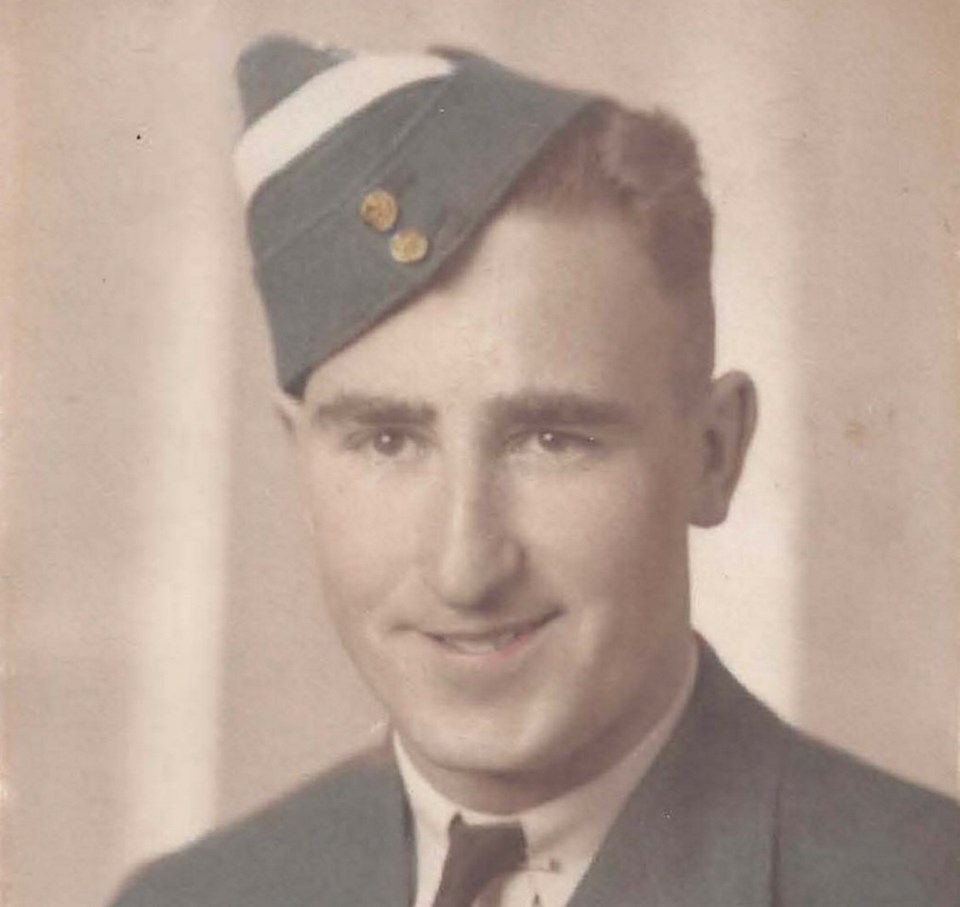An inscription on a cigarette case, initials engraved in a lighter and a military identification bracelet helped solve the mystery behind what happened to four young men who disappeared on a Royal Canadian Air Force flight out of Victoria in 1942.
“We knew who they likely were from the manifest but have been waiting to recover the remains and any artifacts,” said Matt Brown, from the B.C. Coroners Service.
On Oct. 25, 2013, Teal-Jones loggers working in remote woods near Lake Cowichan came across the wreckage of a Second World War plane.
They secured the site and called RCMP, who contacted the Armed Forces.
Laurel Clegg, a forensic anthropologist with the Department of National Defence, visited the site a few weeks later and was able to identify the plane as an Avro Anson L7056 that went missing on Oct. 30, 1942, after taking off from Patricia Bay Station on a routine training exercise.
She knew four airmen were on the plane but was forced to wait for better weather to access the rugged terrain and any remains in the area.
In the meantime, Clegg discovered a heavy fog had rolled in the day the plane disappeared and its radio was broken so it likely did not receive a call back to safety.
A front-page story in the Victoria Daily Times on Nov. 9, 1942, said a search party went to look for the men but gave up after a few days.
They were presumed dead, their families notified and their names later listed on the Ottawa memorial to the missing.
At the time, the area was buzzing with cargo and military aircraft in the midst of war.
Crashes were common, with many planes presumed to be deep in the sea. According to the Department of National Defence, more than 100 aircrew died while flying out of Patricia Bay during the Second World War.
Earlier this month, Clegg was able to return to the wreckage to recover and identify remains with the help of the coroners service and a military ordnance team.
“We looked for any artifacts that might have belonged to the air men,” Clegg said. They set up a grid and found several items with initials engraved on them, British coins and a wallet. They also recovered practice bombs, flare guns and removed any hazardous items from the wreckage.
The four men on the plane were identified as Sgt. William Baird from Brooks, Alta., and three British men, pilot officers Charlie George Fox and Anthony William Lawrence, and pilot Sgt. Robert Ernest Luckock. They were all in their 20s and 30s when they died.
Baird’s family said they were grateful to finally find out what happened to him after all these years. He is survived by two of his six siblings and many nieces and nephews, who shared in a family statement, saying they can now have peace knowing he “will finally be laid to rest with the honour and dignity that he very much deserves.”
Clegg said the British forces notified Ernest Luckock’s family but have had difficulty locating the families of Charlie George Fox and Anthony William Lawrence.
“Unfortunately, they are very common names and it’s been so long,” Clegg said. “Hopefully, we’ll find them.”
With permission from the families, Canadian and British officials plan to honour the men with a ceremony and final resting place in Commonwealth war graves, possibly in Victoria.
“We will never forget the sacrifice of those who came before us and the importance of recovering our fellow airmen cannot be understated. No matter how much time passes, doing the right thing for our people and for their families is an Air Force priority,” said Lt-Gen Yvan Blondin, commander the RCAF.



